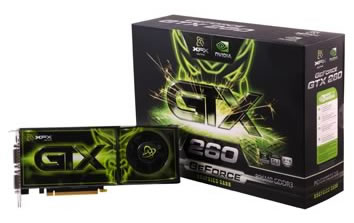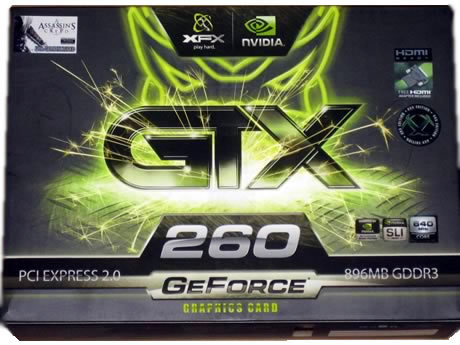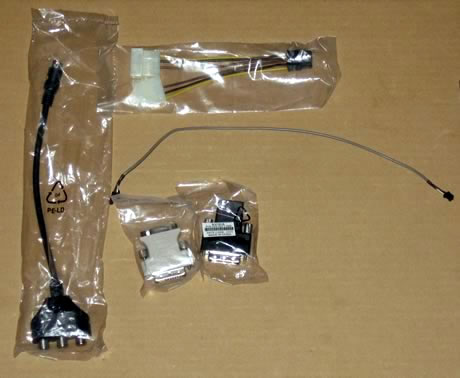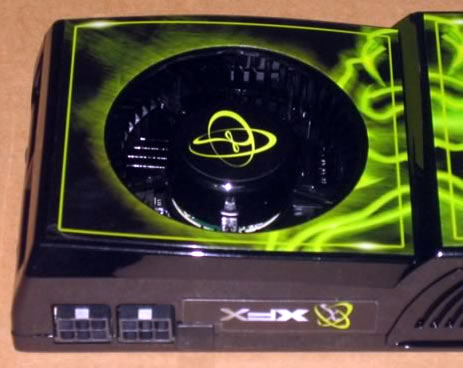XFX 260GTX
1. Features, specifications
Review Pages
2. PC setup
3. Testbed DirectX 9, DirectX 10
4. Benchmarks - FutureMark Hall Of Fame
5. Benchmarks - Crysis (DirectX10)
6. Benchmarks - Crysis Warhead (DirectX9, DirectX10)
7. Benchmarks - Company Of Heroes v1.71 (DirectX 10)
8. Benchmarks - - Assassins Creed (DirectX 10), Half Life 2 Episode 2 (DirectX 9)
9. Overclocking, Final words
 Nvidia's latest product series with the codename 2x0 GTX series includes two powerful graphic cards that promise to improve the gaming experience, especially for graphics-demanding games like Crysis. Today we have the chance to play with an overclocked version of Nvidia's 260GTX series, that comes from XFX. What can you expect from a higher-end product? How much performance can you gain compared with various other graphics cards that most users use on their their desktop?
Nvidia's latest product series with the codename 2x0 GTX series includes two powerful graphic cards that promise to improve the gaming experience, especially for graphics-demanding games like Crysis. Today we have the chance to play with an overclocked version of Nvidia's 260GTX series, that comes from XFX. What can you expect from a higher-end product? How much performance can you gain compared with various other graphics cards that most users use on their their desktop?
- XFX 260GTX (GX-260N-ADD9)
The XFX 260GTX is an improved version of Nvidia's generic 260GTX featuring a massive 640MHz core (vs 576 MHz), shaders clocked at 1363MHz (vs 1242 MHz) and memory that runs at 1150MHz (vs 999 MHz) clocks. In addition, it has 896MB of on-board memory with 448bits bandwidth.

Nvidia has a dedicated website that explains the improvements and benefits of the 260GTX series. Below are the key features of the new series
- 192 Processing Cores
- 2nd Generation NVIDIA unified architecture
- Full Microsoft DirectX 10 support
- NVIDIA SLI technology
- NVIDIA PureVideo HD technology
- NVIDIA PhysX-Ready
- NVIDIA CUDA technology
- PCI Express 2.0 support
- Two dual-link DVI-I and one HDTV output
- Dual-link HDCP-Capable
- OpenGL 2.1 support
- Retail package
The retail box should look familiar to all those who have purchased an XFX product in the past.The product can be found at the retail price of € 290, automatically making it a solution for enthusiasts.

XFX sells three different variations of the 260GTX product. What is not clearly no at a glance is which version are you buying unless you flip over the package and look at the bottom.
Our test version (GX-260N-ADD9) is a highly overclocked version, compared with the stock Nvidia 260GTX series.




The package includes one D-Sub15-to-DVI converter, an S-Video cable, an DVI-to-HDMI adapter and an SPDIF internal cable that its needed to output HDMI sound. Two discs are also included; a driver disc and the retail version of "Assasins Creed" game! The bundle also includes the 'Do Not Disturb' door knob hanger like any previous XFX graphic card we have tested.


The XFX 260GTX implements Nvidia's reference cooling solution with a dual slot design. The graphics card has a length of 26.77cm so you may gave a problem if you have a small case. We should also note the increased power requirements, since this little beast needs much juice from your power supply:
- Non-SLI: 630W Minimum Power Supply
- SLI: 680W Minimum Power Supply
Two DVI-D ports and an analog HDTV jack are available.

As we mentioned earlier, this card really needs much power so has two 6-pin power adapters.

The 260GTX series offer the possibility to perform SLI, paired with an Nvidia 790i SLI platform:

or even triple SLI, if you can afford buying three cards!

The GeForce GTX 260 GPU also offers hardware support for NVIDIA PhysX technology. This means that if you have a spare GeForce 8xxx series somewhere, you can add it and use it to further accelerate PhysX-enabled games. Refer to www.nvidia.com/PhysX for more information.
We installed the graphics card and fired up the CPU-Z software that provides more details about the device. The GPU core runs at 640MHz, while the memory at 1150MHz and the Shader clock at 1363MHz . Compared to the generic solution, it has a clear advantage and hopefully we will see more at the upcoming game reviews.



